

U.S. ImmIgratIon: navIgatIng the maze of h-1B vISa Program In 2023 - George Ernst, Partner, Hall Booth Smith MARCH 2023 • Vol.10 • No.03 (ISSN 2564-2022) 18 13 25 31 renewed focus on Immigration enforcement - Miguel Manna, Parker Poe Understanding the Pregnant Workers fairness act - Jordi Romero, Factorial avoiding Costly fLSa Misclassification Errors - Linda Bond Edwards, RumbergerKirk’s UK Immigration: how the Proposed Blueprint Could Worsen Labor Shortage - Olusegun Akinfenwa, Immigration Advice Service
-
Key
- George Ernst, Partner, Hall Booth Smith


What
- Ruthie White, Partner, Spencer Fane
I n
HR Legal & Compliance Excellence MARCH 2023 Vol.10 No.03 (ISSN 2564-2022)
Immigration: navigating the maze of h-1B visa Program In 2023
D e X
U.S.
foreign national
factors employers should consider when sponsoring a
worker for H-1B status
07 Articles 27 Pay Transparency Laws Call For High Employer Due Diligence
employers must consider
On the Cover 10 Navigating The Privacy Minefield In Your Workplace
HR can lead the change - Dimitri Shelest, CEO & Founder, OneRep
ALSP: How Companies Can Transcend Cost And Extract Maximum Value
alternative legal services providers to remain competitive, they need to demonstrate value to their clients
How
16
For
Gabriel Buigas, Executive Vice President and Leader, Contracts, Compliance, and Commercial Services, Integreon 22 Human Resources Essentials For M&A Success
to ask before, during and after the deal
Tim Keefe, Director, Strategy & Transformation, MorganFranklin Consulting
What
-
Renewed Focus On Immigration Enforcement
Areas that will likely see an increase in enforcement
- Miguel Manna, Attorney, Parker Poe
Understanding The Pregnant Workers Fairness Act

A quick guide for HR departments
- Jordi Romero, Co-Founder and CEO, Factorial
Avoiding Costly FLSA Misclassification Errors

FLSA audits can help employers avoid or minimize the impact of misclassification claims
 - Linda Bond Edwards, Partner, RumbergerKirk
- Linda Bond Edwards, Partner, RumbergerKirk
TOP PICKS 13 18 25 31
UK Immigration: How The Proposed Blueprint Could Worsen Labor Shortage
The proposals are not friendly either to UK universities or businesses
- Olusegun Akinfenwa, Immigration Advice Service

INDEX
How are our Legal & Compliance Products and Services helping to make you smarter?
Legal & Compliance Excellence - Monthly Interactive Learning Journal
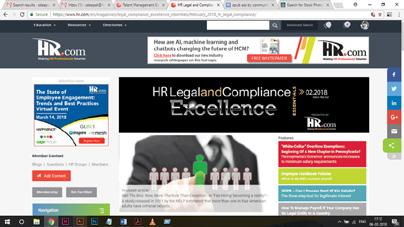
This monthly interactive learning experience showcases solutions to deal with the latest legal and compliance issues facing corporations and legal departments.
Legal and Compliance Webcasts for Credit
HR.com offers various informative webcasts on a variety of topics including the latest HR compliance updates and legal considerations for employers and all HR professionals. Webcasts are available live online with a downloadable podcast and a copy of the slides (PDF) available before and after each webcast. Earn all of the required recertification credits for aPHR, PHR, SPHR, GPHR, and SHRM Certifications. HR.com’s one-hour webcasts, in every HR specialty including Legal and Compliance, are pre-approved for HRCI and SHRM credit (excluding Demo webcasts).
Legal and Compliance Community
Join almost more than 30,000 HR.com members with a similar interest and focus on compliance on legal regulations in HR. Share content and download research reports, blogs, and articles, network, and “follow” peers and have them “follow” you in a social network platform to communicate regularly and stay on top of the latest updates. This well established Legal and Compliance Community is an invaluable resource for any HR professional or manager.

SEP 2017 Vol. No. 09 Use these invaluable Legal & Compliance resources today! For more information phone: 1.877.472.6648 | email: sales@hr.com | www.hr.com
Editorial Purpose
Our mission is to promote personal and professional development based on constructive values, sound ethics, and timeless principles.
Excellence Publications
Debbie McGrath CEO, HR.com - Publisher
Sue Kelley Director (Product, Marketing, and Research)

Babitha Balakrishnan and Deepa Damodaran Excellence Publications Managers and Editors
HR Legal & Compliance Excellence Team
Deepa Damodaran, Editor
Chinnavel Design and Layout (Digital Magazine)
Chandra Shekar Magazine (Online Version)
Submissions & Correspondence
Please send any correspondence, articles, letters to the editor, and requests to reprint, republish, or excerpt articles to ePubEditors@hr.com
For customer service, or information on products and services, call 1-877-472-6648
Debbie mcgrath Publisher, HR.com
Withrecord-low unemployment rates, many employers are finding it more difficult to hire
and retain necessary talent. This is especially true in information technology (IT), medical, and other professional fields, such as accounting, engineering and mathematics.
Due to a need to consider as many potential applicants as possible when filling critical roles and positions, many employers may be interested in hiring and sponsoring foreign national workers using the H-1B nonimmigrant visa (or H-1B visa program) category.
Check out Hall Booth Smith Partner George Ernst’s U.S. Immigration: Navigating The Maze Of H-1B Visa Program In 2023, where he provides a brief overview of some of the important issues that employers should consider when sponsoring a foreign national worker for H-1B status.
The Biden administration recently announced it will end the Covid-19 emergency declaration on May 11, 2023. Large sums of funding are flowing through the various enforcement agencies. There is also
Deepa Damodaran Editor, HR Legal & Compliance Excellence

a renewed focus and public scrutiny on good corporate governance. These factors signal that regulators will increase their enforcement activities.
Parker Poe Attorney Miguel Manna touches upon what areas will likely see an increase in enforcement in terms of employment-based immigration and compliance, in his article, Renewed Focus On Immigration Enforcement.
Immigration Advice Service’s Olusegun Akinfenwa discusses how How The Proposed UK Immigration Blueprint Could Worsen the Labor Shortage in the country.
Also, read Understanding The Pregnant Workers Fairness Act by Factorial CEO Jordi Romero, and Avoiding Costly FLSA Misclassification Errors by RumbergerKirk Partner Linda Bond Edwards.
This is not all! This issue of HR Legal & Compliance Excellence also focuses on other legal aspects and highlights that should help you keep your workforce healthy, safe, and secure.
Happy Reading!
HR
Disclaimer: The views, information, or opinions expressed in the Excellence ePublications are solely those of the authors and do not necessarily represent those of HR.com and its employees. Under no circumstances shall HR.com or its partners or affiliates be responsible or liable for any indirect or incidental damages arising out of these opinions and content. eDItor’S note navigating the maze of the U.S. h-1B visa
Subscribe now for $99 / year And get this magazine delivered to your inbox every month Become a Member Today to get it FREE! SIGN UP OR
Advertising
Copyright © 2023 HR.com. No part of this publication may be reproduced or transmitted in any form without written permission from the
must be
Program In 2023
For
Opportunities, email: sales@hr.com
publisher. Quotations
credited.
Legal
is published monthly by HR.com Limited, 56 Malone Road, Jacksons Point, Ontario L0E 1L0
Address: www.hr.com Write to the Editor at ePubEditors@hr.com
& Compliance Excellence (ISSN 2564-2022)
Internet
In a world of unparalleled challenges (global pandemic, racial injustice, political rivalry, digital 4.0, emotional malaise), uncertainty reigns. Finding opportunity in this context requires harnessing uncertainty and harnessing starts with reliable, valid, timely, and useful information. The Excellence publications are a superb source of such information. The authors provide insights with impact that will guide thought and action.

Excellence publications are my ‘go-to’ resource for contemporary and actionable information to improve leadership, engagement, results, and retention. Each edition offers rich and diverse perspectives for improving the employee experience and the workplace in general.

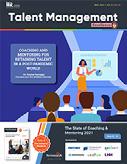
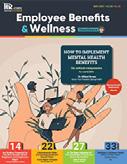


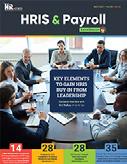


I regularly read and contribute to Leadership Excellence and Talent Management Excellence. I use many of the articles I read to augment my own presentations and I often share the articles with my clients. They are always quick, right on target for the latest issues in my field, and appreciated by my clients. If you want to stay up to date on the latest HR trends, choose a few of the different issues from the Excellence series of publications.

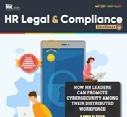


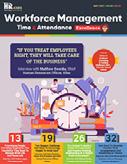
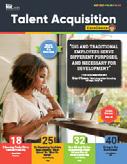
 Dave Ulrich
Rensis Likert Professor, Ross School of Business, University of Michigan Partner, The RBL Group
Julie Winkle Giulioni Author, Virtual /Live Keynote Presenter, Inc.’s Top 100 Leadership Speakers
Dr. Beverly Kaye CEO, BevKaye&Co.
Dave Ulrich
Rensis Likert Professor, Ross School of Business, University of Michigan Partner, The RBL Group
Julie Winkle Giulioni Author, Virtual /Live Keynote Presenter, Inc.’s Top 100 Leadership Speakers
Dr. Beverly Kaye CEO, BevKaye&Co.
WHY EXCELLENCE PUBLICATIONS?
We’re eager to hear your feedback on our magazines. Let us know your thoughts at ePubEditors@hr.com
U.S. Immigration: navigating t he maze of h-1B visa Program In 2023
Key factors employers should consider when sponsoring a foreign national worker for h-1B status
By George Ernst, Hall Booth Smith
Withrecord low unemployment rates, many employers are finding it more difficult to hire and retain necessary talent. This is especially true in information technology (IT), medical, and other professional fields, such as accounting, engineering and mathematics.
Due to a need to consider as many potential applicants as possible when filling critical roles and positions, many employers may be interested in hiring and sponsoring foreign national workers using the H-1B nonimmigrant visa (or H-1B visa program) category.
This article will provide a brief overview of some of the important issues that employers should consider when sponsoring a foreign national worker for H-1B status.
Before an employer decides to sponsor a foreign national worker for H-1B status, many employers may have an opportunity to first hire a foreign national worker when the foreign national graduates from a United States university or college and receives an initial year of work authorization under the F-1 student Optional Practical Training (OPT) program.
Hiring a foreign national worker who has OPT work authorization is usually a fortuitous arrangement for
the employer and the foreign national worker, as the employer is not obligated to pay any attorney or legal fees and is often able to hire a foreign national worker immediately.
Additionally, if the foreign national worker earned a degree from a U.S. college or university in a science, technology, engineering and mathematics (STEM) field, then it may be possible for the foreign national to apply for an additional two years of work authorization.
If the employer meets other requirements, such as enrolling in E-Verify and agreeing to a training program consisting of regular evaluations, this is called STEM OPT work authorization. Hiring a foreign national worker using OPT or STEM OPT work authorization allows an employer to first hire a foreign national worker for one to three years before needing to sponsor the worker for H-1B status.
While OPT and STEM OPT can be an advantageous form of work authorization, especially when trying to fill urgent needs for a position, this form of work authorization cannot be extended once it has been exhausted. Thus, employers interested in hiring foreign national workers may want to consider using the H-1B nonimmigrant work visa program to provide a longer duration of work authorization.
HR Legal & Compliance Excellence presented by HR.com March 2023 7 Submit Your Articles
Cover artICLe
Specialty occupations
Contrary to popular belief, the H-1B visa program is not limited to IT workers. While IT workers tend to be highly represented in the H-1B visa program, the H-1B visa program allows employers to sponsor foreign national workers in “specialty occupations.” A “specialty occupation” is defined as “an occupation which requires theoretical and practical application of a body of highly specialized knowledge in fields of human endeavor including, but not limited to, architecture, engineering, mathematics, physical sciences, social sciences, medicine and health, education, business specialties, accounting, law, theology and the arts, and which requires the attainment of a bachelor’s degree or higher in a specific specialty, or its equivalent, as a minimum for entry into the occupation in the U.S.,” under 8 C.F.R. 214.2(h)(4)(ii).
Assuming the employer can demonstrate that both the position and foreign national worker meet the requirements under 8 C.F.R. 214.2(h)(4)(iii) and meet certain wage requirements according to the Department of Labor (DOL), then it should be possible for the employer to sponsor a foreign national worker for H-1B work status.
When considering the H-1B visa program, employers should understand the following basics:
● Employers can request an initial period of work authorization up to three years, and can request extensions for a maximum of six years (however, extensions beyond the six-year maximum are permissible under certain circumstances).
● H-1B work status allows for both full-time and part-time work.
● Fees associated with the H-1B process, especially attorney and filing fees, must be paid by the employer (with some very limited exceptions).
● Employers should consult with immigration counsel to ensure compliance with the H-1B visa program.
h-1B Lottery and Cap – Subject employers
The real difficulty with the H-1B visa program is the limited number of new H-1B visas issued each year and the numerous steps it takes to sponsor a foreign
national worker for their initial H-1B work status. At the beginning of each U.S. fiscal year, (Oct. 1) there are approximately 65,000 new H-1B visas for Cap-Subject employers, with an additional 20,000 set aside for new H-1B visas for Cap-Subject employers for foreign nationals who have graduated from a U.S. college or university with a master’s degree or higher. Most private employers will be considered a Cap-Subject employer. If an employer is Cap-Exempt, then that employer is not subject to the limited number of H-1B visas and can apply for an H-1B visa at any time. However, Cap-Exempt employers are typically limited to colleges and universities, government research organizations or nonprofit organizations with an affiliation agreement with a college or university.
Because of the limited number of H-1B visas available for Cap-Subject employers, most employers must carefully plan and execute a series of specific procedures to maximize the prospect of successful H-1B sponsorship. Beginning in January and February, employers should assess which foreign national workers they need to include in the H-1B lottery registration. Due to the limited number of H-1B visas available, the purpose of the H-1B lottery registration is to permit the government to issue H-1B visas to all prospective employers interested in sponsoring a foreign national worker for an initial H-1B visa in a fair manner. Employers should prioritize foreign workers with expiring OPT or STEM OPT work authorization, especially those who are ineligible for a STEM extension to ensure that these foreign national workers are included in the H-1B registration lottery. Employers should also carefully assess the specific dates when OPT and STEM OPT work authorization will terminate, as this will be important later in the process.
Beginning in late February, employers should review the H-1B registration requirements on the U.S. Citizenship and Immigration Services (USCIS) website. The H-1B registration allows employers to enter their prospective foreign national workers for the H-1B lottery and pay the necessary fee, which is currently $10 per foreign national worker.
Typically, the H-1B lottery registration period occurs during the first two weeks of March. For 2023, the H-1B registration period was from March 1 through March 17. Because of the limited number of H-1B visas permitted each year, it is recommended that employers register
HR Legal & Compliance Excellence presented by HR.com March 2023 8 Submit Your Articles U.S. Immigration: Navigating The Maze Of H-1B Visa Program In 2023
a foreign national worker for as many lotteries as possible while the foreign national worker is working with either OPT or STEM OPT work status. Entering an employee in the H-1B lottery for multiple years increases the chances that the foreign national worker will be selected.
the filing Process
After the H-1B lottery registration period closes in March, USCIS conducts its initial round of selections. If a registration is selected, the employer will need to carefully review the H-1B registration as it will provide important instructions with respect to the location for filing the H-1B petition.
Beginning April 1, employers will need to assemble the H-1B petition and submit the petition with the required filing fees to USCIS. All H-1B petitions must be received by USCIS no later than June 30. Additionally, the H-1B petition must be received prior to the expiration of a foreign national worker’s OPT or STEM OPT work authorization in order to receive the CapGap work authorization extension. The Cap-Gap work authorization extension provides an automatic extension of work authorization between the expiration of OPT or STEM OPT work authorization and the start of the H-1B work authorization, which is always on or after Oct. 1.
After the initial H-1B lottery registration and filing period closes, USCIS may conduct a second lottery if an insufficient number of H-1B petitions are received by June 30. This second lottery will contain a smaller number of selections from the initial H-1B lottery registrations. Thus, while a foreign national worker may not be included in the first round of selections, there is always a chance that the foreign national worker could be selected in a later round of selections.
Because of various requirements when putting an H-1B petition together, employers should allow for a

minimum of three weeks to complete and submit each H-1B petition to USCIS.
It is important to note that if an employer hires a foreign national worker who already has H-1B work status, then that employer would only need to file an H-1B portability petition. Usually, it takes a few weeks to prepare an H-1B portability petition, and once the H-1B portability petition is filed, the foreign worker should be able to immediately begin working for the new employer, even while the portability petition is pending. In other words, once a foreign national worker has been selected in the H-1B lottery, it is typically no longer necessary to go through the H-1B lottery registration period when the foreign national worker changes employers. Additionally, extensions of existing H-1B status are also exempt from the H-1B lottery.
Successful h-1B Submission Strategy

There are many additional legal and regulatory requirements that need to be considered by employers when hiring foreign national workers using the H-1B visa program, which are too numerous for the purposes of this article. The best strategy for a successful H-1B submission is to work with immigration counsel to navigate the many steps and deadlines involved, and to ensure compliance with the H-1B visa program.
Finally, because the H-1B visa program only allows for a maximum of six years of work authorization (with some limited exceptions), employers should begin discussing more long-term solutions, such as employment sponsorship for permanent residency (green card) with immigration counsel as early as possible. In immigration, the more planning and time an employer has, usually the better the results.
HR Legal & Compliance Excellence presented by HR.com March 2023 9 Submit Your Articles U.S. Immigration: Navigating The Maze Of H-1B Visa Program In 2023
George Ernst is a Partner at Hall Booth Smith’s Little Rock office, where he concentrates on immigration, international business, and labor and employment matters.
Would you like to comment?
navigating t he Privacy Minefield In Your Workplace
how hr can lead the change
By Dimitri Shelest, OneRep
Human resources (HR) departments collect and store copious amounts of employee information, and protecting that data is more difficult than ever before. At the same time, in response to employee demands, regulatory constraints, and increased costs, privacy has become a top priority for companies of every size and in every sector.
As a result, HR departments have a difficult task: helping protect employee privacy in a digital environment marked by malicious cyber attacks, frustrating accidents, and ubiquitous access to personal information online.
February was Data Privacy Awareness Month. HR departments must understand the latest privacy challenges while implementing solutions that make the most impact.
Protecting employee Privacy Is Challenging
Personally Identifiable Information (PII) is easily accessible in today’s online ecosystem.
For starters, data breaches have become frighteningly common. Nearly 2,000 companies reported a data breach last year, while third quarter breaches, the last quarter with fully reported metrics, increased by 70 percent from 2021. Additionally, data breaches impacted 42 percent more Americans last year,
underscoring the once-unimaginable scope of data compromise.
This information quickly makes its way to the Dark Web or online forums, where threat actors can acquire PII in bulk, utilizing the data to create convincing phishing scams, access corporate or personal accounts, and more.
Of course, threat actors and fraudsters do not have to rely on data breaches to power their operations. PII is often readily available online through dozens of people-search sites that scrape personal information from the web, providing detailed digital dossiers that are often accessible for free or a low fee.
According to The Verge, more than a hundred people-search sites exist online, likening the removal process to a “whack-a-mole game of sending takedown notices.”
When coupled with people’s tendency to overshare online, threat actors do not have to work hard to collect people’s personal information, which can be weaponized against companies and their employees.
Not only does a data breach have devastating financial and reputational consequences, but it can often have cascading consequences, including subsequent privacy breaches or network incursions, that are difficult to contain.
HR Legal & Compliance Excellence presented by HR.com March 2023 10 Submit Your Articles
For employees, personal data is used to commit identity and financial fraud, both of which reached an all-time high in 2022 following years of rapidly accelerating fraud reports. Employees can also experience real-world threats, including stalking, swatting, doxing, and harassment, especially harmful activities that can have catastrophic personal well-being and career consequences.
That is why HR departments must help their people protect their personal information by safeguarding company data, training and providing solutions that support holistic employee privacy.

tips for Protecting employee Privacy
Protecting employee privacy starts with advocating for cybersecurity investments and implementing best practices, but it also includes equipping employees to take effective steps to secure their privacy.
Here are three tips everyone can take to help keep their information safe.
#1 treat PII like a valuable asset
PII powers our digital ecosystems, helping companies serve personalized experiences, advertisements, and product recommendations. Personal data is often compared to digital gold or oil, real-world assets whose value is known and understood.
We need to treat our data as an equally valuable asset, and we must protect it accordingly. Practically, this means reviewing app and website permissions to ensure that these services only have access to the intended information. Delete unused apps, and reconsider which companies and services should have access to your data.
Regularly performing a privacy audit helps ensure that only authorized information is accessible to third parties.
#2 Control the controllable
Individuals can not impact every data privacy factor, but they can control many critical parts.
For example, commit to thinking before posting on social media, considering the intended and unintended consequences of sharing personal and professional information with a global audience.
People can also remove their information from people-search sites and other public platforms, restricting access to personal information and making it more difficult for bad actors to undermine their privacy.
#3 Practice good Digital hygiene
Digital hygiene is an often-overlooked defensive strategy for keeping account information and personal
HR Legal & Compliance Excellence presented by HR.com March 2023 11 Submit Your Articles
Navigating The Privacy Minefield In Your Workplace
data secure. For instance, 70 percent of people say they use the same password for multiple accounts, and only one-third of companies mandate that employees use two-factor authentication on their accounts.
In response, HR departments can teach employees to:
● Update account passwords using strong, unique credentials for every account
● Enable two-factor authentication on all accounts
● update software when new iterations become available
● Identify phishing scams.
Practicing good digital hygiene is a low-cost, high-impact way to improve privacy and security, requiring only intentionality to make a meaningful impact.
Improving Privacy Can Start with hr

Protecting employee privacy has become a critical issue for HR teams. The current digital environment has made it easier for malicious actors to access and exploit personal information, leading to devastating consequences for employees and companies alike.

HR departments must proactively address this challenge by advocating for cybersecurity investments, educating employees on best practices, and equipping them with the tools they need to protect their personal information. Data Privacy Awareness Month is a reminder of how important and multi-faceted employee privacy is, and the role HR departments play in effecting changes that protect employee privacy.
By putting in place the latest tools and practices, HR can help ensure that employees and companies feel secure in a digital world.
Would you like to comment?
HR Legal & Compliance Excellence presented by HR.com March 2023 12 Submit Your Articles
Navigating The Privacy Minefield In Your Workplace
Dimitri Shelest is the CEO & Founder of OneRep.
renewed focus on Immigration enforcement
areas that will likely see an increase in enforcement
By Miguel Manna, Parker Poe
TheBiden administration recently announced it will end the Covid-19 emergency declaration on May 11, 2023. Large sums of funding are flowing through the various enforcement agencies. There is also a renewed focus and public scrutiny on good corporate governance. These factors signal that regulators will increase their enforcement activities.
In the context of employmentbased immigration and compliance, the following areas will likely see an increase in enforcement.
the end of employment Verification Flexibility
In March 2020, the U.S. Department of Homeland Security (DHS) announced the temporary relaxation of the Form I-9 physical inspection requirement. Under the temporary rule, employers
that adopted physical proximity precautions due to the pandemic were not required to review Section 2 documents in the physical presence of their employees. Instead, employers were authorized to review the required documentation remotely.
Initially, the exception only applied to employers operating fully remote workplaces. However, in March 2021, U.S. Immigration and Customs Enforcement (ICE) updated the policy to say that the policy applied to employers with both in-person and remote workers. ICE clarified that only those employees hired on or after April 1, 2021, who physically report to a company worksite on a regular and predictable basis, require an in-person examination of their documentation. Employees who work remotely on a full-time basis are temporarily
exempted from the physical examination requirement.
DHS has consistently stated that the flexibility is temporary and that once “normal operations” resume, employers must conduct in-person verification for all employees, who were onboarded via remote verification, but it is not clear what is meant by normal operations, as the phrase is not defined in any of the policy announcements.
Additionally, DHS has extended the remote verification policy a number of times since its implementation. The policy is currently set to expire on July 31, 2023. Given that the Covid-19 national emergency and public health emergency declarations will end on May 11, 2023, it seems unlikely that the remote verification policy will be extended after July 31.
HR Legal & Compliance Excellence presented by HR.com March 2023 13 Submit Your Articles
top Pick
Despite the agency’s insistence that the policy is temporary, in 2022, DHS introduced a notice of proposed rulemaking to allow DHS to authorize alternative document examination procedures. According to the proposed rule, DHS is interested in pursuing alternatives based on the lessons the agency learned during the Covid-19 pandemic and to accommodate the increasing number of businesses that are adopting remote work arrangements on a permanent basis. The rule must complete the rulemaking process, so no immediate changes are expected.
Now is a great time for employers to begin to prepare for the shift back to the physical inspection requirement. Employers may consider taking the following steps:
● Gather internal written documentation or policies for remote onboarding and work-from-home arrangements.
● Identify employees whose Form I-9s were completed remotely, paying special attention to the employee’s respective hire date.
● Make plans to review original documentation in person for those employees whose Form I-9s were completed remotely.

● Monitor DHS websites such as www.uscis.gov and www. ice.gov for updates and extensions of the temporary policies.
Increased Work Site Inspections
Between fiscal years 2019 and 2020, the number of site visits
conducted by the Fraud Detection and National Security Directorate (FDNS), which falls under USCIS, dropped by 45%. The drop was the result of the suspension of in-person services and spending cuts caused by the Covid-19 pandemic. However, as pandemic precautions disappear, employers are likely to see a renewed interest and increase in onsite visits. The FDNS investigates immigration benefit fraud, including employment fraud, among other things. Pursuant to their investigations, FDNS officers worksite inspections to verify the information provided by an employer on an immigration petition. The visits are often unannounced, and the officer typically asks to speak with the sponsored employee and a company representative.
HR Legal & Compliance Excellence presented by HR.com March 2023 14 Submit Your Articles Renewed Focus On Immigration Enforcement
FDNS generally focuses on employers who primarily sponsor H-1B and L-1 visas.
It should be noted that compliance with an FDNS onsite visit, absent a subpoena or warrant, is purely voluntary. That said, cooperation is recommended. While employers cannot necessarily plan for an unannounced visit, they can take steps to prepare in case they are contacted by FDNS:
● Know the work location of employees who have received employer sponsorship for a work visa.
● Consider performing an internal audit of employees with L or H visa status to ensure their work locations, job titles, and salaries are consistent with the information provided on the various immigration sponsorship forms.
● Determine whether changes in working conditions and changes in work location require filing amended petitions to update USCIS of these changes.
● Develop an internal procedure to respond to onsite visits.
Consider including the following elements:
● Alert employees that FDNS may show up at their home office (if working remotely) with instructions to contact the designated point of contact.
● Train personnel responsible for receiving or greeting visitors (request identification, do not allow unfettered access to a facility, whom to contact)
● Appoint a primary point of contact and a backup to be contacted in the event of a site visit. The primary point of contact should be familiar with individuals who are sponsored for immigration benefits.
● Point of contact should accompany the inspector at all times.
● Prepare employees to address questions about their duties, salary, and reporting structure.
● Employee point of contact should be prepared to address questions concerning the number of employees and estimates on how many employees are sponsored for visas.
● Employee point of contact should also have access to immigration counsel during the visit.
For the past three years, employers have had to perform a difficult balancing act. On the one hand, compliance obligations never went away, and the temporary flexibility allowed by

the government, while helpful, also caused confusion. Employers also had to implement new compliance protocols that prioritized the safety of their workforce.
Accordingly, there is an expectation that the various immigration regulatory agencies will afford some reasonable accommodations. It is, therefore, critical for employers to plan for an increase in government-led compliance investigations. Having a plan and documenting internal policies will be invaluable in demonstrating good faith in light of a once-in-a-lifetime global pandemic.
or (919) 835-4048.
Would you like to comment?
HR Legal & Compliance Excellence presented by HR.com March 2023 15 Submit Your Articles
Renewed Focus On Immigration Enforcement
Miguel Manna is an Attorney in the Raleigh office of law firm Parker Poe He provides strategic immigration solutions to clients of all sizes and across a wide variety of industries, including health care, higher education, technology, and banking and finance.
aLSP: how Companies Can transcend Cost a nd Extract Maximum Value
By Gabriel Buigas, Integreon
There is a lot of legal industry buzz surrounding the newly issued 2023 Alternative Legal Service Provider Market (“ALSP”) report by Georgetown and the Thomson Reuters Institute. Much of that buzz relates to their finding that over the last two years, ALSPs have grown over 45%, now representing an industry size of $20.6B.
While some of this growth can be attributed to a bigger pool of providers added to the ALSP bucket, there is strong agreement that much of it occurred during the pandemic, in large part due to a scarcity of resources and greater acceptance of remote delivery.
For those unfamiliar with the ALSP industry, it is comprised of service providers that manage volumes of legal work that is often routine in nature and benefits from technology, process improvements, and access to highly trained and more cost-effective resources than found at a traditional law firm or within a corporate legal department.
For corporate legal departments, usage of ALSPs has remained consistent, especially in traditional areas of contracts management, e-Discovery, legal research, staffing, and regulatory and compliance
services. What has changed since the days when I was a buyer of these services for a Fortune 10 tech company is that cost is no longer the primary driver.
While cost still matters, the primary motivation is creating capacity for the legal department to focus on more strategic and higher risk/complexity work – the work that underpins the value this function delivers to the company.
As the role of the chief legal officer/general counsel broadens in both scope and complexity, freeing up muchneeded capacity to keep up with increased scope and complexity is becoming an imperative rather than an option. A secondary and often overlooked benefit of focusing the legal department’s efforts on the most interesting and strategic work is that it supports staff retention as members of the team see greater purpose, satisfaction, and value in their contributions.
And yes, it also reduces costs on both ends of the spectrum as ALSPs can provide greater transparency and cost efficiency, while the corporate legal department keeps more of the interesting work rather than farming it out to expensive law firms.
Legal department leadership increasingly relies on legal operations to help identify and transition work shifting to
HR Legal & Compliance Excellence presented by HR.com March 2023 16 Submit Your Articles
for alternative legal services providers to remain competitive, they need to demonstrate value to their clients
an ALSP. It has been impressive to see the growth of legal operations over the last five years. Legal ops leaders are highly influential and often serve as the primary point of contact during the procurement and decision-making process. That is why dedicated legal ops organizations, such as CLOC and LINK are heavily sponsored by legal services and tech providers.
As mentioned earlier, cost is no longer the primary driver for using an ALSP. In assessing providers, it is critical to determine their ability and level of sophistication for leveraging technology in their service delivery and approach to continuous improvement. Tech-enabled services should encompass automation, data analytics, and reporting, and offer expertise in the key application platforms used by the corporate legal function.
As budgets get constrained in 2023, identifying ALSPs that can help maximize value from existing technology investments is critical. For example, while Contracts Lifecycle Management (CLM) tools have seen explosive growth over the last few years, many are still not being optimized by internal teams and/or have poor adoption and ROI. It is easier to fix what you already have as opposed to simply licensing the next shiny new toy.

ALSP’s value to an organization is not just about the delivery of services but providing insights and recommendations as part of its commitment to continuous improvement. They need to deliver expertise on the
technologies that underpin the service delivery today and tomorrow. ALSPs should also support corporate clients in becoming more digitally enabled through more real-time data and analytics that drive both informed decision-making and improvements.
As an industry, we should caution against overselling home-grown technologies and development capabilities. It is simply too hard for smaller service companies to develop enterprise-grade applications. We can, however, learn to better use and enable existing applications to drive greater value for our clients.
For ALSPs to remain competitive, they need to demonstrate value to their clients. This includes focusing on exceptional delivery and creating true partnerships. When a true partnership exists, the ALSP is often viewed as an extension of the corporate legal function and their employees identify themselves closely with their corporate clients.
As corporations anticipate and plan for the global economic headwinds of 2023, they are already starting to see large layoffs and hiring freezes. These changes will certainly impact budgets for the corporate legal function. This is coming at a time when increased costs are driving service providers, particularly law firms, to push for fee increases for their services. To meet these budgetary challenges, corporate legal leaders will continue to push certain types of work to ALSPs. The old mantra of “doing more with less” does not resonate with today’s employee base and leads to high attrition and job dissatisfaction.
As a result of the above, I fully expect to see in the next 2024 ALSP report that overall the industry has again shown double-digit growth and that increasingly sophisticated and demanding corporate buyers will have used these service providers to better weather the economic headwinds of 2023.
Would you like to comment?

HR Legal & Compliance Excellence presented by HR.com March 2023 17 Submit Your Articles
ALSP: How Companies Can Transcend Cost And Extract Maximum Value
Gabriel Buigas is the Executive Vice President and Leader of the Contracts, Compliance, and Commercial Services business unit at Integreon
Understanding t he Pregnant Workers fairness act
a quick
guide for hr departments
By Jordi Romero, Factorial
Foryears, interested parties have been working behind the scenes to secure greater accommodation for pregnant and postpartum women in the workplace. Late last year, this movement saw its biggest victory yet, when President Biden signed the Pregnant Workers Fairness Act (PWFA) into law with bipartisan support as well as the backing of groups as diverse as the National Women’s Law Center and the US Chamber of Commerce.
When the law goes into effect on June 27, 2023, it will have a seismic effect on the professional lives of pregnant and postpartum women, especially those with lower-wage and more physically demanding jobs. Below, you will find a quick primer on what the law is and how your business can take all necessary steps to ensure eventual compliance with it.
Pre-existing accommodations
Before delving into what the PWFA consists of and how employers
can best prepare for it, it is worth looking at the patchwork of laws that currently exist to protect the rights of pregnant women in the workplace.

The two most important laws in this respect are the Americans with Disabilities Act and Title VII of the Civil Rights Act of 1964 (as amended by the Pregnancy
Discrimination Act). The former protects workers who have pregnancy-related disabilities; the latter makes it so that pregnancy discrimination is considered a form of sex discrimination under the law.
Also important are the Family and Medical Leave Act — which grants pregnant workers twelve weeks of unpaid maternity leave
HR Legal & Compliance Excellence presented by HR.com March 2023 18 Submit Your Articles
top Pick
during pregnancy or after giving birth — and the PUMP for Nursing Mothers Act, which ensures that employees are granted time and an adequate location for pumping breast milk.
All of these laws are important and have spared millions of pregnant women and new mothers from experiencing undue discrimination in the workplace. Still, none of them actually required employers to make significant accommodations for pregnant women when it came to the actual performance of their jobs. That is why the PWFA represents such a significant advancement — it is poised to change all of that.
the PWfa — What it Is and What it Covers
To quote Congress’ own website, the PWFA “prohibits employment practices that discriminate against making reasonable accommodations for qualified employees affected by a pregnancy, childbirth, or related medical conditions.” It guarantees workers the right to “reasonable work accommodations” during the term of their pregnancy and in the months afterward.
Its remit is wide, covering not just full-time employees, but also part-time, temporary and seasonal workers. In addition to government employees, the law also covers any private company with more than fifteen employees.

What the PWFA will look like in action is of course highly individualized, and will depend on close collaboration between the company and the affected worker.
Possible accommodations under the new law might include additional chairs or stools for workers physically unable to stand for long periods; break time to access medication for nausea or other pregnancy-related ailments; adjustments to working hours to accommodate physical conditions; more frequent breaks; limits on heavy lifting; allowing pregnant workers to telecommute; and even exceptions to certain “clean desk” policies which prevent workers from keeping personal items on their desks (most often found in industries like hospitality)
Of course, the accommodations that employers will be expected to make for workers under the PWFA are not unrestricted — if the requested accommodations impose an “undue hardship” on the employer, they will not be required to comply with them.
how hr Departments Should Prepare for the PWfa
In accommodating pregnant or postpartum workers — as in every other aspect of HR — clear communication is key.
That means, for one thing, ensuring employees have accurate information about their rights from the very start of the process, in order to prevent confusion down the line. It also means working out accommodations in detail throughout the pregnancy and postpartum period through what the law describes as an “interactive process.”
By entering into this conversation in good faith and taking every
reasonable step to ensure the relevant accommodations are met, employers can make a positive impact on the health and well-being of their workers while staying on the right side of the law.
Meanwhile, employers should stay vigilantly attuned to the various state and local laws that govern pregnancy, nursing and leave, ideally employing an HR compliance calendar to ensure that nothing is missed. The use of a DEI dashboard can also pay massive dividends here, allowing employers to gain real-time insight into employee satisfaction and take quick, decisive action when needed.
Finally, employers should strive to look at the PWFA not as a comprehensive solution to workplace discrimination but as a starting point. For too long now, pregnancy has held women back in the workplace and needlessly stunted otherwise promising careers. Federal law still does not provide PTO for childbirth, but that does not mean employers can not work to institute more flexible accommodations that go above and beyond the letter of the law.
HR Legal & Compliance Excellence presented by HR.com March 2023 19 Submit Your Articles
Understanding The Pregnant Workers Fairness Act
Jordi Romero is Co-Founder and CEO of Factorial Would
you like to comment?
HRCI® & SHRM® CERTIFICATION PREP COURSES
GROUP RATES AVAILABLE
For HR Professionals
Show that management values the importance of the HR function, and has a commitment to development and improvement of HR staff.
Ensure that each person in your HR department has a standard and consistent understanding of policies, procedures, and regulations.
Place your HR team in a certification program as a rewarding team building achievement.
For Your Organization
Certified HR professionals help companies avoid risk by understanding compliance, laws, and regulations to properly manage your workforce.
HR Professionals lead employee engagement and development programs saving the company money through lower turnover and greater productivity and engagement.
A skilled HR professional can track important KPIs for the organization to make a major impact on strategic decisions and objectives, including: succession planning, staffing, and forecasting.
HR.com/prepcourse CALL TODAY TO FIND OUT MORE 1.877.472.6648 ext. 3 | sales@hr.com
1 Less expensive than a masters or PhD program, and very manageable to prepare with
2. legislation and best practices
3. Recognized, Industry benchmark, held by 500,000+ HR Professionals
Group Rate Options
We offer group rates for teams of 5+ or more for our regularly scheduled PHR/SPHR/ SHRM or aPHR courses.
For groups of 12+, we can design a more customized experience that meets your overall length of the course.
Groups rates for HRCI exams are also available as an add-on.
All group purchases come with 1 year of HR Prime membership for each attendee to gain the tools and updates needed to stay informed and compliant

CALL TODAY TO FIND OUT MORE 1.877.472.6648 ext. 3 | sales@hr.com | HR.com/prepcourse
1 2 3
human resources essentials for m& a Success

What to ask before, during and after the deal
By Tim Keefe, MorganFranklin Consulting
Althougheconomic headwinds persist, M&A has displayed resilience and innovation over the second half of 2022 and into 2023. Whether you’re working through due diligence now, or evaluating options for the future, human resources have an important role to play. Knowing what to evaluate from an HR perspective is vital to acquisition success and compliance.
Consider the below a guide for deal teams to avoid HR-related pitfalls before, during, and after an acquisition.
Pre-Deal Due Diligence
“Married in haste, we may repent at leisure.” – William Congreve, 1693
The HR aspects of acquisition are significant since leaders, employees, workplace processes and culture are often the essence of an organization’s value. Before investing, assess the HR function, human capital, and culture as part of the due diligence process alongside typical functions like finance and IT. When assessing, consider these questions:
HR Legal & Compliance Excellence presented by HR.com March 2023 22 Submit Your Articles
● Culture. What are the company’s core values? Do they align with the acquirer’s principles? Will these cultures be accretive, or do they appear dissonant? How will the employee experience and customer experience change?
● Processes. What is the company’s performance management program? How are employees compensated? How will compliance requirements change as a result of the transaction? Which HRIS does the target company use, and how is it utilized? Will there be significant changes to pay processes and benefits post-merger? Will employees need to learn new systems for HR-related functions?
● Employees. What knowledge, skills, and abilities (KSAs) are critical to achieving the deal thesis? Between the companies, are there very different functions and roles, or is there redundancy? Which roles and individuals are considered key to success, and what plans are in place to retain them through a reasonable period of time?
● Vision & Leadership. Should the founder and/or leadership team transition to the new company? Do the leaders of both companies have alignment in goals and approaches? Can their personalities and work styles mesh? Are they effective communicators, and are they equipped to communicate the necessary information to

their employees? What will the impact be on post-merger integration efforts?
Looking for red flags early on in these areas can save time and resources, directly impacting the ROI of the deal. Furthermore, clarity and understanding of these core areas of HR enables more effective integration plans and Transition Services Agreement (TSA) preparation.
Deal Close
During a recent acquisition process, someone who could have been valuable to the transition team didn’t understand her role. With little communication provided, this individual hung back, waiting for instruction and guidance. The lack of clarity cost the team her insights, but also made her appear expendable in the new organizational structure. Not identifying each individual’s role and communicating clear expectations can harm integration and cause value loss. This is the time when most employees are at risk for attrition.
During the deal close phase of an acquisition, HR should focus on the following:
● Payroll & Benefits. Prioritize activities to ensure continuity and a seamless transition of payroll and benefits without lapses or inaccuracies
HR Legal & Compliance Excellence presented by HR.com March 2023 23 Submit Your Articles Human Resources Essentials For M&A Success
● Compliance. Become familiar with employment law and requirements in the geographies the new entity will operate. If layoffs or a reduction in force occur, understand applicable regulations and plan accordingly.
● Compensation. Create a new compensation and incentive model, ensuring no surprises. Clarify timetables and any applicable grandfather clauses. Pay utmost attention to payroll processes that may be changing. There is huge financial risk in not staying compliant through payroll issues.
● Job Architecture and Leveling. Be ready to share comprehensive job details with each employee. Confusion, errors, and decreased morale result if this is not done. Critical deal dynamics, like key-person compensation, can and should be planned for during this time.
● Staying Human. Dedicate time and effort to change management and communication. The acquirer’s leaders must meet employees where they are, virtually or in person. Ensure employees understand their value and that what they bring to the new organization is essential and desired.
● Formal Onboarding. Provide employees with a positive, welcoming experience. Spell out precisely what employees can expect to experience – on day one, 30, 60, and 90 of the transition. This includes compensation and benefits, roles, reporting structure, and performance management guidelines.
Post-acquisition
If you’ve done a good job with integration planning, you’re ready to implement key activities right away. From an HR and compliance lens, now is the time to:
● Maintain Clear Communication. When performance management is put into place, ensure that all employees know the company’s desired behaviors and how they’re being evaluated. Make roles, responsibilities, and reporting structures clear and proactive.
● Standardize Processes. Try to eliminate “legacy to acquired” differences by establishing
standard operating procedures in all HR policies for the new organization as a whole.
● Deputize Champions. Tap key executives and influencers to support and drive integration. Align incentives accordingly.
● Prioritize To Optimize. Tolerance for change wears thin quickly. Space out new initiatives and allow for adjustments and feedback along the way.
● Reflect And Reinforce. Communicate the case for change widely within the organization and reinforce the “what’s in it for me.” Tell small success stories and share results as you go.
● Evolve Culture. Meeting in the middle can invigorate culture, keeping what works and leveling up what didn’t before. Celebrate change as progress, support workload management, and reward behaviors (not just results).
All too often, HR is an afterthought to financials, technology, operations, or sales during M&A activity. Your HR team needs to be at the table. Supporting people-related elements throughout a deal’s lifecycle can make the difference between a transaction that exceeds expectations or misses the mark.
As a leader in MorganFranklin Consulting’s Strategy & Transformation practice, Director Tim Keefe has honed his expertise by helping organizations minimize risk and optimize value in times of change – including through mergers and acquisitions.
Would you like to comment?

HR Legal & Compliance Excellence presented by HR.com March 2023 24 Submit Your Articles
Human Resources Essentials For M&A Success
avoiding Costly fLSa Misclassification Errors

fLSa audits can help employers avoid or minimize the impact of misclassification claims
By Linda Bond Edwards, RumbergerKirk
TheFair Labor Standards Act (FLSA) is one of the oldest employment laws in existence. At the most basic level, the FLSA requires covered employers to pay overtime for all hours worked over 40 per week and payment of at least the federal minimum wage. The law passed in 1938 when employers seemed to be forcing employees to work an extraordinary number of hours without proper compensation.
The premise of that 85-year-old law is still at the heart of many FLSA lawsuits employers face today, most of which allege failure to pay overtime for one reason
or another. The biggest issue for employers in FLSA cases is improper employee classification. Because employers typically do not track time worked for exempt employees, recordkeeping regarding hours worked may also become an issue.
Improper Classification of Employees Can Be Costly
One recent settlement agreement highlights the costly mistake of improper employee classification. In January 2023, the United States Department of Labor (DOL) reached a settlement with a Chicago-area gro-
HR Legal & Compliance Excellence presented by HR.com March 2023 25 Submit Your Articles
toP PICK
cery store for alleged FLSA violations. While the nearly $400,000 settlement involved alleged child labor violations and failure to pay overtime, at least a portion of the settlement included misclassifying non-exempt employees as exempt.
Likewise, in many other misclassification cases, employers have broadly construed an exemption from the overtime and minimum wage requirements to their detriment. Employers should begin with the premise that ALL employees are entitled to overtime. While such a premise may seem a little bizarre, the courts review exemptions with an eye towards fairness, however, the burden of proof regarding the application of an exemption lies with the employer. As such, applying exemptions may be more precise if the employer is mindful that a careful initial analysis of an exemption could result in thousands of dollars of overtime if they are wrong.
Determining Exempt vs. Non-Exempt employees
The more common exemptions for executive, administrative and professional roles should not be broadly applied or subject to the best guess. Employees may no longer be satisfied with titles and a “salary” that is subject to deductions, especially quasi-managerial employees who are scheduled to work many hours and paid minimal salaries, but who are without authority to make decisions that impact the management of the business. Some of these employees are paid less

than or slightly more than the people they supervise who may be entitled to overtime payment.
To determine whether an employee is exempt, there are two basic components to consider: 1) the employees must be paid a salary and 2) the primary duties of the position must be consistent with the regulations proscribed by the DOL. The DOL’s website provides tools for employers to identify what the primary duties must entail in order to meet the exemption. The DOL’s fact sheets provide guidance for a deeper dive into the regulations and should be the starting point for employers when reviewing existing positions or creating new ones to determine proper classification.
fLSa audits Can help employers avoid or minimize the Impact of Misclassification Claims
So, what should an employer do to avoid or at least minimize the impact of misclassification claims? The answer is simple, but the process is not easy! FLSA audits force employers to answer hard questions about how employees are classified and paid. An audit involves more than looking at job titles and what the employee prefers.
An FLSA audit involves identifying a person with enough knowledge and skill to perform the audit. The FLSA auditor must see beyond what is written on a job description to determine what the employee does
HR Legal & Compliance Excellence presented by HR.com March 2023 26 Submit Your Articles
Avoiding Costly FLSA Misclassification Errors
and their level of responsibility for making decisions that impact the organization. The FLSA auditor must also understand the organization and how a particular job fits into the organization. In other words, what is the primary duty of this position?
What employers Should Know about Salary Basis requirements
The employer should also get the salary payment correct. According to the regulations, to qualify for exemption, employees generally must not be paid less than $684 per week on a salary basis. Being paid on a salary basis means an employee regularly receives a predetermined amount of compensation each pay period on a weekly, or less frequent, basis. The predetermined amount cannot be reduced because of variations in the quality or quantity of the employee’s work. Subject to specified exceptions, an exempt employee must receive the full salary for any week in which the employee performs any work, regardless of the number of days or hours worked. Exempt employees do not need to be paid for any workweek in which they perform no work. If the employer makes deductions from an employee’s predetermined salary, i.e., because of the operating requirements of the business, that employee is not paid on a salary basis.
If the employee is ready, willing and able to work, deductions may not be made for time when work is not available. The regulations do allow deductions for serious policy violations so long as the directions in the policy are clear. Employers have to be clear about such violations and deductions. A full review of the salary basis requirement can be found here: “Fact Sheet #17G: Salary Basis Requirement and the Part 541 Exemptions Under FLSA.”
SCOTUS Clarifies Definition of Salary
On Feb. 23, 2023, the U.S. Supreme Court in a 6-3 decision in Helix Energy Solutions Group Inc. v. Hewitt, clarified that a salary is a “regular stream” of money that does not vary based upon how much the employee works. In Helix, the employee typically worked 84 hours per week and was paid a daily rate of pay. Although this case arose based upon the application of the provisions allowing an exemption for highly compensated non-exempt employees, the court was clear that the payment received must be consistent
and not based on how many hours or days the employee works.
The lesson for employers is that pay for exempt employees must be salaried regardless of the quality or quantity of work performed. If an employer has unique circumstances and desires to fashion a pay plan for those circumstances, the employer should contact an experienced employment lawyer to assist in drafting the plan.
Why employers Should Care
Employers should pay careful attention to how employees are classified. FLSA cases don’t “settle” like other employment cases. If there is an adverse ruling against the employer and the previously classified exempt employee is found to be non-exempt, the employer is liable for overtime for a two-year lookback period – three if the failure to pay overtime is found to be willful. What this means is that the previously classified exempt employee that was working 60 hours per week will now be entitled to overtime for those 20 hours. The back pay and attorney fees add up.
Employers would be wise to consider the audit route to ensure employees are classified correctly!
1 Congress enacted the FLSA to eliminate both “substandard wages” and “oppressive working hours.” Barrentine v. Arkansas-Best Freight System, Inc., 450 U. S. 728, 739 (1981)
Linda Bond Edwards is a Partner in RumbergerKirk’s Tallahassee office. She represents employers in the private and public sectors in matters involving employment and labor issues. As a former corporate director of human resources, Linda brings to her legal practice the pragmatic and real-world experiences arising from the employer-employee relationship. She is also a county and circuit court mediator certified by the Florida Supreme Court, in which she assists parties in resolving their disputes through the use of the mediation process.
Would you like to comment?

HR Legal & Compliance Excellence presented by HR.com March 2023 27 Submit Your Articles
Avoiding Costly FLSA Misclassification Errors
Pay transparency Laws Call for high employer Due Diligence
What employers must consider
By Ruthie White, Spencer Fane
An emerging issue employers should plan to address during the coming year involves pay transparency, a requirement for employers to disclose wage information to applicants or employees.
In 2022, major companies including Wells Fargo, IBM,
and American Express enacted policies around pay disclosure. Two states (California and Rhode Island) and Washington, D.C. adopted their own pay transparency laws, while other states and cities are working to adopt their own. Some require employers to provide the salary range to current employees who
are changing roles if they request the information (Washington, D.C.).
As of January 3, the following states or cities have passed pay transparency laws: California; Colorado; Connecticut; Ithaca, New York; Jersey City, New Jersey; Maryland; Nevada; New York City; Rhode Island; Toledo, Ohio; Washington, D.C.; and Westchester County, New York.
Employers with offices in different states now face the challenge to ensure they are up to date with each state’s laws (and some cities) regarding pay transparency. Some states, like Colorado, have very specific requirements and other states only require pay disclosure if an applicant or employee requests the information.
HR Legal & Compliance Excellence presented by HR.com March 2023 28 Submit Your Articles
In addition to the various state law requirements around pay transparency, the National Labor Relations Act (NLRA) can protect discussions involving compensation as concerted activity at the federal level. For federal contractors, the Office of Federal Contract Compliance Programs (OFCCP) prohibits policies that discourage pay transparency, and employees and applicants should now feel free to openly discuss pay ranges.
Add in the increasingly common use of remote work, and employers have many mitigating factors to consider in what is and isn’t required.
When faced with this increasingly challenging regulatory environment, the best option for employers might be to take control of the situation and create policies and best practices instituting companywide transparency. This can be not

only proactive but also beneficial to company culture to take this step even if not currently required by law. In addition to showing support for pay equity and addressing often persistent and inherent wage gaps across gender and racial identities, this helps move toward compliance if and when a law does take effect requiring the practice.
Specific to job postings, pay ranges included should always be in good faith for what an employer could reasonably expect to pay the designated position.
Based on the current trends, employers should consider:
● Implementing or updating internal salary transparency policies or protocols by providing existing employees the same access to the pay data as new hires or applicants.
● Conducting salary market research to support a company’s compensation model.
● Conducting a pay equity analysis to ensure current salaries are in line with applicable law.

● Ensuring that documentation justifying pay exists, as well as explanations for deviations for pay protocols.
● Training managers and supervisors on pay protocols, including a section on implicit bias.
Employers have a unique opportunity to assess both current compliance needs and proactive opportunities to address this important issue. Attracting and retaining top talent remains a high priority, and the expectations of job candidates continues to shift toward pay transparency as a requirement and not a perk.
Would you like to comment?
HR Legal & Compliance Excellence presented by HR.com March 2023 29 Submit Your Articles
Pay Transparency Laws Call For High Employer Due Diligence
Spencer Fane Partner Ruthie White helps employers resolve labor and employment disputes in and out of court.

ePublication editorialCalendar Checkoutthenewandupcoming themedHRtopicsinHRLegal& ComplianceExcellence Check ePublications Editorial Calendar Here. Would you like to submit an article? | Write to us at ePubEditors@hr.com Submission Guidelines 1 Contingent Work Jan 2023 2 Cybersecurity Feb 2023 3 Worker Immigration Mar 2023 4 Substance Abuse and Marijuana in the Workforce Apr 2023 5 Workplace Equity - Interview Special May 2023 6 Workplace Unions and HR Jun 2023
UK Immigration: how t he Proposed Blueprint Could Worsen Labor Shortage
By Olusegun Akinfenwa, Immigration Advice Service
TheUK Home Secretary, Suella Braverman, is reportedly working on proposals to drastically cut net migration across the study, employment, and family visa routes. If the proposals are implemented, it could worsen the current labor shortage in the UK, harm UK universities, and even separate families.
Net migration (the difference between immigration and emigration) reached a historic high of 504,000 by the year ending June 2022, prompting Rishi Sunak’s administration to pledge action towards bringing it down to “reasonable levels”. The lift on Covid-19 travel restrictions that sparked the return of international students, who accounted for 277,000 of the figures, as well as the Ukraine Sponsorship Scheme and other relocation schemes, contributed significantly to the increase. UK employment migration, however, accounted for just 15% of the data.
In this period, a total of 2,082,321 visas were issued, with study routes numbering 486,868, topping all other categories. Dependent family members of foreign students amounted to 81,089, a more than five-fold increase from the 13,666 visas recorded in 2019.
In an attempt to reduce numbers on the student visa route, Braverman is considering an increase to the minimum income threshold requirement per dependant. Under current rules, international students, who want to bring their partners or children to the UK must have at least £680 per applicant. Increasing the threshold could lead to many students being unable to sponsor their loved ones to join them and make the UK a less attractive place to study. There are also reports that only students on Ph.D. or other postgraduate courses may be eligible to apply for their dependents to join them.
Also, reportedly, under consideration is an increase in the annual salary requirement for British nationals or those with settled status living in the UK, who wish to apply for family visas for their foreign partners. Under current regulations, an applicant must show that their sponsor has an income of at least £18,600. This figure may be about to increase might increase if Braverman’s proposals come into effect.
An increase in the minimum salary thresholds for foreign workers applying for jobs on the shortage of
HR Legal & Compliance Excellence presented by HR.com March 2023 31 Submit Your Articles
toP PICK
the proposals are not friendly either to UK universities or businesses
occupation list (SOL) and on the Skilled Worker route, in general, is also being considered.
As a general principle, a Skilled Worker visa applicant must earn at least £25,600 per year, or the “going rate” (the annual gross salary according to their profession) whichever is higher. Increasing salary levels could mean employers face more difficulties filling those roles, especially as many HR professionals grapple with the growing skills gap in the labor market. Many UK employers may have to reform their payroll structure to meet the eligibility criteria, placing more burdens on businesses struggling to find suitably skilled candidates to remain competitive.

Britain has been experiencing a protracted labor and skills shortage, which reached 16.8% in August 2022, with some industries even facing shortages of up to 35.5%. The UK economy has struggled to achieve its pre-pandemic labor supply and employment due to various factors, which include Brexit and the ending of free movement for workers from the EU. Employers have since turned to the Skilled Worker migration routes to hire foreign talents, but if Braverman’s proposals come to pass, this could become more difficult.
Findings by the Higher Education Policy Institute show that international students make an annual contribution of £25.9 billion to the economy in tuition and other variables, such as living costs and expenditures from their visiting relatives. According to the British Council, foreign undergraduate students pay between £11,400 - £38,000 annual tuition, while for postgraduates it ranges from £9,000 - £30,000. Making the route more restrictive could spell financial difficulties for the University sector and other related sectors.

Experts from different sectors including the legal and education communities have reacted to the plans, pointing out its wider implications on the UK economy.
John Cahill, an immigration lawyer and partner at Immigration Advice Service, said: “The proposals are not friendly either to UK universities or to UK businesses and appear to be designed to achieve a political agenda to reduce overall net migration simply as a means to an end, whilst rather recklessly failing to take into consideration the wider damage they may have on the economy.”
Vivienne Stern, chief executive of Universities UK, an academic body representing 140 universities in the UK, called the plan “nonsensical,” stating that making it difficult for international students to study in the UK would deter post-graduates who make “huge contribution to research and the skilled economy.”
In the latest development, Braverman has also proposed to reduce the time international students can stay in the UK after completing their studies, The Times reported. The proposal aims to cut the duration from its current two years to six months, but the Department for Education (DfE) is said to have “strongly opposed” the plan. This came after ministers were asked to present their positions of immigration policy options. Apart from DfE, Department for Business, Energy and Industrial Strategy and the Department for International Trade are other departments opposing the plan, fearing its effects on the country’s economic positions. The proposed plans bothering on foreign students’ rights to bring dependents to the UK was however, less opposed.
This article was reviewed by John Cahill an immigration lawyer and partner at Immigration Advice Service, a leading law firm that helps individuals and businesses with their immigration needs.
Olusegun Akinfenwa is a Content Writer for Immigration Advice Service.
Would you like to comment?
HR Legal & Compliance Excellence presented by HR.com March 2023 32 Submit Your Articles UK Immigration: How The Proposed Blueprint Could Worsen Labor Shortage
Thank you for partnering with us!
Circa provides OFCCP compliance management and recruiting technology solutions to deliver qualified candidates on a level, equitable playing field for organizations. LEARN MORE

Aimed Alliance is a non-profit organization that seeks to protect and enhance the rights of health care consumers and providers.

EVERFI’s workplace training offerings empower employees to transform their organizations' workplace cultures with impactful, change-driven courses that go beyond compliance. LEARN MORE
Paycom (NYSE:PAYC) offers cloud-based human capital management software to help businesses streamline employment processes, from recruitment to retirement. With a robust suite of products including payroll, time and labor management.

LEARN MORE
Designing better ways to work by providing cutting-edge products and exceptional experiences within HR, Talent, Time Management, Benefits and Payroll.
LEARN MORE

THANK YOU
A DVERTISE WITH U S
LEARN MORE
INSPIREHR WEST EMPOWERHR TECH AMERICAS 2023 March 6-8, 2023 regISter The State of Rewards and Recognition Programs and Tools March 29, 2023 regISter The Future of Diversity, Equity, Inclusion and Belonging March 15-16, 2023 regISter Streamlining ACA Compliance: Insights and Stories from HR Leaders March 30, 2023 2:00 PM - 3:00 PM ET regISter Ultimate Guide to Choosing a Cloud HR System March 9, 2023 2:00 PM - 3:00 PM ET regISter Protect Your People! Managing and Engaging Talent through Cross-Border M&A Deals March 21, 2023 12:00 PM - 1:00 PM ET regISter vIrtUaL eventS & hr.Com WeBCaStS UPComIng www.hr.com/upcoming_webcasts www.hr.com/virtualconferences View our Upcoming Webcasts Schedule and Register Today! W e BC a S t S Surviving or Thriving: Supporting Wellbeing in Hybrid Working Environments March 16, 2023 12:00 PM - 1:00 PM ET regISter Are You Ready for Third Wave DEI? March 15, 2023 11:00 AM - 12:00 PM ET regISter W e BC a S t S v I rt U a L event S View our Upcoming Virtual Conference Schedule and Register Today!

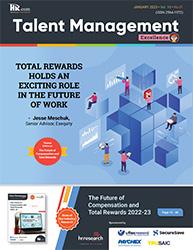
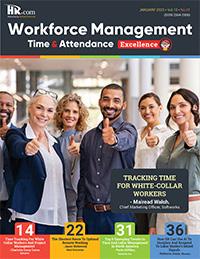

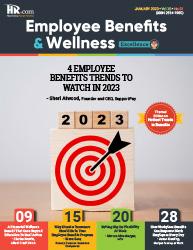


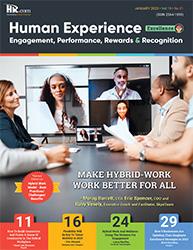
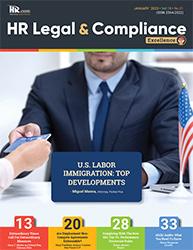
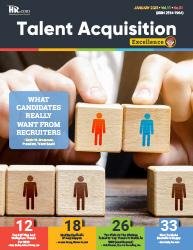
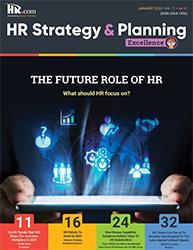
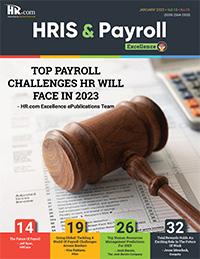

Like to submit an article? Use our online submission form or for more information go to www.hr.com/ExcellencePublications Publications 13 targeted Publications to reach Your audience Informing, Educating, Enlightening and Assisting HR professionals in their personal and professional development, the Excellence series offers high-quality content through the publications!


For more information: Phone: 1.877.472.6648 | Email: ePubeditors@hr.com | www.HR.com/epubs HR Legal & Compliance Excellence March 2023






 - Linda Bond Edwards, Partner, RumbergerKirk
- Linda Bond Edwards, Partner, RumbergerKirk




















 Dave Ulrich
Rensis Likert Professor, Ross School of Business, University of Michigan Partner, The RBL Group
Julie Winkle Giulioni Author, Virtual /Live Keynote Presenter, Inc.’s Top 100 Leadership Speakers
Dr. Beverly Kaye CEO, BevKaye&Co.
Dave Ulrich
Rensis Likert Professor, Ross School of Business, University of Michigan Partner, The RBL Group
Julie Winkle Giulioni Author, Virtual /Live Keynote Presenter, Inc.’s Top 100 Leadership Speakers
Dr. Beverly Kaye CEO, BevKaye&Co.










































